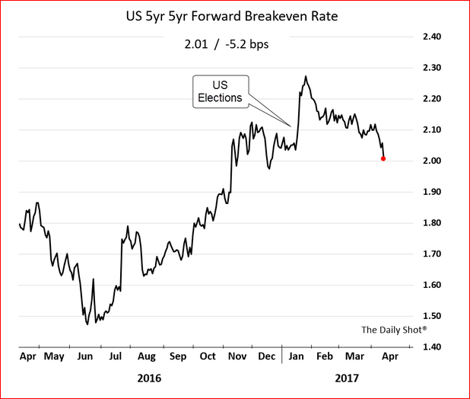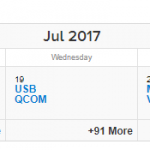Investors can be a fickle bunch when it comes to their perception of the future path of inflation. Immediately after the Trump election, long-term interest rates shot up. The so-called “Trump trade“ meant that equities were the place to be, bonds were to be avoided – all this on the expectation that Trump`s policies were going to stimulate growth and accelerate inflation. By mid-March, equities rose by 14 per cent and the 10-year bond yield rose by 80 bps from their lows just prior to the November election. Clearly, the inflation game was afoot as investors gave resounding thumbs up, expecting inflation to boost profits and to seal the fate of the generational drop in long-term interest rates.
A lot has happened since mid-March to change investor sentiment. The Trump administration failed famously to replace Obamacare and now its entire legislative agenda is running into all kinds of political headwinds. Domestically, tax reform is bogged down and the same applies to its trade policy. Internationally, tensions are running high with respect to Russia (and its Syrian policy) and North Korea.
Political issues aside, the underlying economic forces are now showing that price acceleration is not to be expected. Chart 1 shows how quickly expectations have shifted. The 10yr breakeven inflation rate reached a high of just over 2 per cent in February. Now, investors expect inflation to average only 1.90 per cent for the next 10 years and the trend points to that rate possibly falling further.
Chart 1

Source: WSJ, Daily Shot, April 13, 2017
A more convincing measure is that of expected inflation (on average) over the 5 year period that begins 5 years from today—– the so-called: 5yr5yr forward breakeven rate shown in Chart 2. This measure dropped by 25 bps since its high in February. This forward rate has returned to the level prevailing just prior to the November election. We have come full circle.
Chart 2

Source: WSJ, Daily Shot, April 13, 2017













Leave A Comment